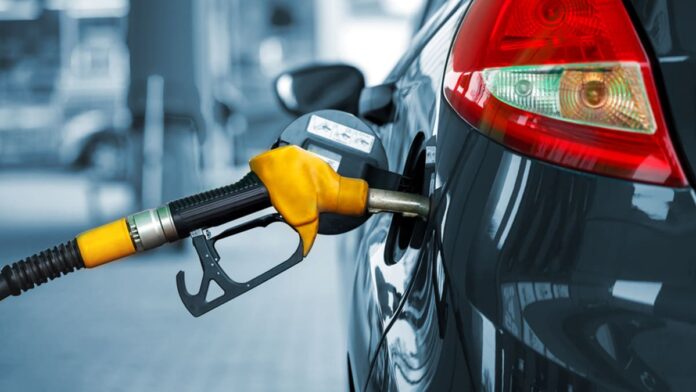As Australians do all they can to lessen the impact of the cost-of-living crisis, one stumbling block remains – petrol. Specifically, the price of petrol.
Regular drivers will know that petrol prices tend to go in cycles. A sharp hike in the price per litre is usually followed by a slow decline. A fortnight or so later, another spike signals the beginning of the next cycle.
Fair or not – a debate that has long raged – that’s generally ‘just how it is’, and motorists rarely ask why. Most of us have bigger fish to fry and we must choose our battles. Few of us choose to battle ‘big oil’ but one man, Peter Khoury, is doing so on our behalf.
Mr Khoury is a spokesperson for NRMA (the National Roads and Motorists’ Association), and he believes service station owners are overcharging drivers in a big way. NRMA’s data shows that this week, Sydney petrol prices are far higher than Melbourne’s, averaging $2.35/L compared to $1.96.
The petrol companies justify this by saying that the cycles in the two cities run in different phases. Basically, that means when Sydney prices are high, Melbourne’s are low, and vice versa.
A spokesperson for Viva, which refines oil for Shell-branded fuels, explained it this way: “Sydney is about one to two weeks ahead of Brisbane and Melbourne in the cycle.” Last weekend, the spokesperson said, the Sydney cycle “reached peak restoration”.
What does ‘peak restoration’ mean for petrol prices?
‘Peak restoration’ simply means petrol prices have jumped back up to the high point in the cycle. It refers to restoring petrol to its “true” price, after a period of discounting, according to Viva’s spokesperson.
Such phrasing almost seems to suggest motorists should be grateful for the discount they were getting before normal prices were restored. And perhaps that’s true to a point, but one can’t help but wonder why the price drops slowly, multiple times.
It’s a stark contrast to the way supermarkets discount. Coles and Woolies don’t drop the price of a pack of Tim Tams slowly over two weeks. It does not drop from $5.00 to $4.75 to $4.50 and so on until it spikes back to $5.00. The supermarkets will simply knock a dollar off the price for a week or so and call it a ‘special’.
The gradual-drop method of lowering prices was referred to by Allan Fels in his February report on price gouging as ‘rockets and feathers’. “When costs rise prices go up quickly, ‘like a rocket’,” Prof Fels wrote in the report. “But when costs fall prices fall slowly, ‘like a feather falling to the ground’. This practice of delaying price falls when costs have fallen can be very profitable for businesses.”
And those businesses include petrol companies.
Timing is everything
Still, Australian motorists have long known about petrol price cycles and, to an extent, we can plan around them, filling the tank up when prices are low. Drivers travelling interstate might have to be a bit more watchful, though. As explained above by Viva’s spokesperson, Sydney’s cycle is out of phase with Melbourne and Brisbane.
One could ask why the phases are different between states. One suspects the oil companies have a readymade answer for such a question.
Still, the more cynical and observant motorists might not be convinced. They might point out that Melbourne’s current falling petrol prices have come at the end of Victorian school holidays. They might further point out that Sydney’s price spike has come at the beginning of the NSW holidays.
But that’s surely just a coincidence. Isn’t it?
What do you think about the way oil companies control petrol prices? Do you make sure you fill up at the ‘bottom’ of the cycle? Let us know via the comments section below.
Also read: The petrol price conundrum – how to get a better deal
Disclaimer: All content on YourLifeChoices website is of a general nature and has been prepared without taking into account your objectives, financial situation or needs. It has been prepared with due care but no guarantees are provided for the ongoing accuracy or relevance. Before making a decision based on this information, you should consider its appropriateness in regard to your own circumstances. You should seek professional advice


I don’t think we get price cycles in regional areas. Seems to be a city thing.
Absolutely right David, it is only a big city thing. Up until 15 years or so ago we used to have a price cycle in Canberra and I used to follow it and try and fill my cars a day or so before the price was expected to jump. Unfortunately like regional areas we don’t have a price cycle now we just pay near top price all the time.
In Australia it seems the main cost of petrol is the government taxes. I mean when the 3×3 temporary road levy introduced by Nick Greiner when he was Premier of NSW around 1988 was never temporary but simply transferred straight to an extra tax on the petrol cost and is still there now it says a lot about what government circles consider “temporary”.
Its always the same , on holidays and long week-ends the petrol price goes up .
Simply to take advantage of people traveling more at those times .pure price gouging .
And really why do we have to have price cycles .Are the companies not able to hold stable prices ,The pricing cycles are deliberately there to confuse people